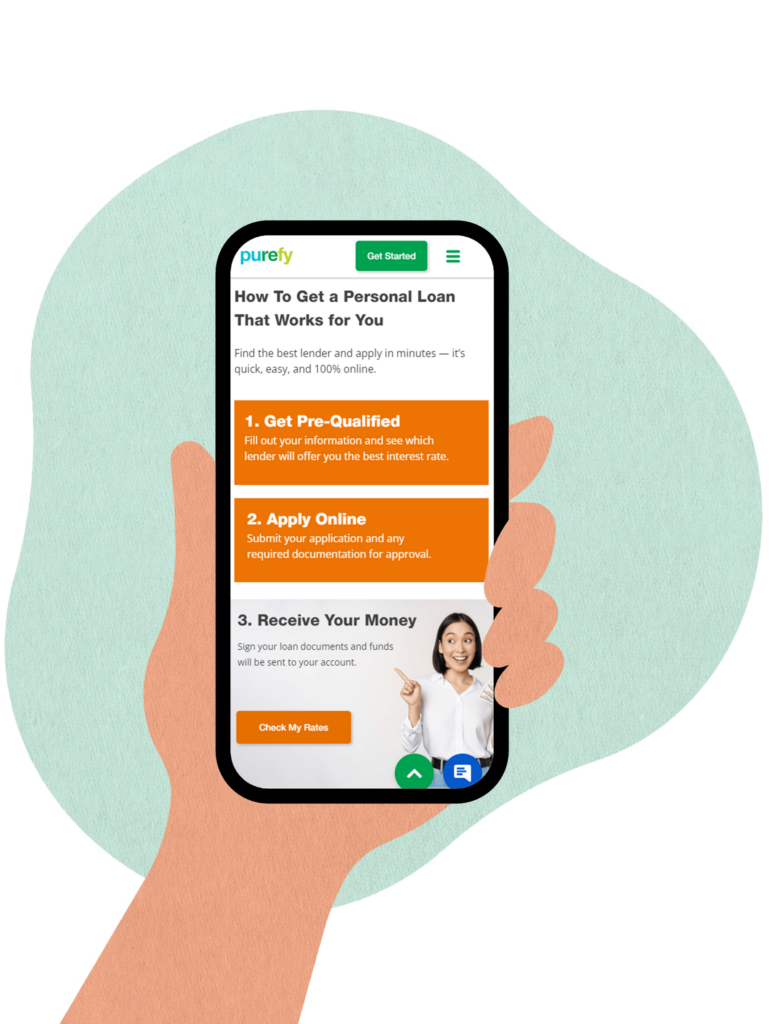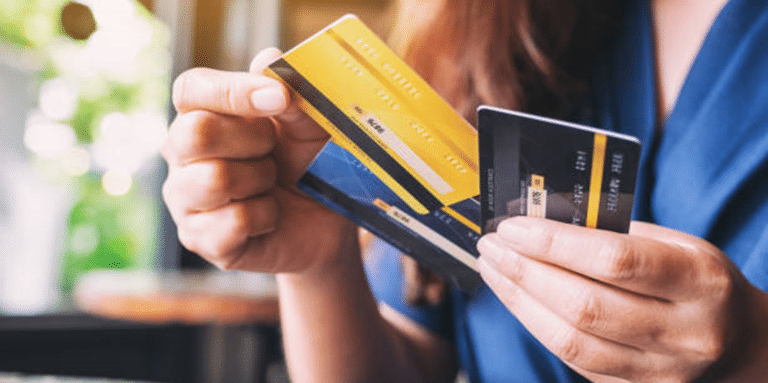Got a big expense to cover, or home improvements you would like to get done? You may be trying to figure out the best way to pay for it. Two common ways to quickly pay for a large expense are credit cards and personal loans.
Credit cards provide you with a rolling line of credit that you can spend freely but must pay back over time. Most people already have a credit card – in fact, according to the credit bureau Experian, the average American has four credit cards.
Personal loans are installment loans in which you receive the money in one lump sum and pay it back in monthly payments over time, usually between two and five years.
If you’re considering taking out a personal loan or using credit cards, there are a few key factors to evaluate. These factors include the purpose of the loan, how much money you require, and your ability to repay it. Read on for everything you need to know about personal loans vs. credit cards.
Installment Loans vs. Revolving Credit
When you take out an installment loan, you borrow a set amount of money and pay it back monthly over a defined period of time. Common types of installment loans are auto loans, personal loans, and mortgages.
With revolving credit, you have a maximum amount of debt (your “credit limit”) that you can accumulate, and as you pay it off, your available credit will increase again. In other words, you would have the ability to spend more money until you hit your credit limit, rather than being limited to a one-time, set amount of money as you would with an installment loan.
With most revolving credit, once you take on the debt, a minimum payment is set which you must meet each month until you pay the balance down to zero. The most common example of revolving credit is credit card debt, and other types include lines of credit and home equity lines of credit.
When borrowing a large sum of money that cannot easily be repaid within a short period of time, an installment loan like a personal loan is generally preferred because it provides a more structured payment plan with a fixed end date, which helps you budget your finances.
Lump Sum vs. Revolving Access
When borrowing money, you have two options: lump sum or revolving access. For the purposes of this discussion, the former pertains to personal loans, while the latter pertains to credit cards.
With a lump sum loan, you’ll receive the money in one upfront payment and repay it with fixed monthly payments until it’s paid in full. This option is best if you need the money for a specific purpose and can afford to make higher monthly payments. However, if you need more money in the future, you’ll need to apply for a separate loan.
If you need more flexibility and might need to borrow money regularly in the future, you can choose a loan with revolving access. This way you will have access to borrow money as you need it without having to apply for multiple loans, and you’ll only be charged interest on the amount you use.
Similarities and Differences Between Personal Loans and Credit Cards
Now that we’ve covered the basics of personal loans and credit cards, let’s learn more about their similarities and differences.
Key similarities between personal loans and credit cards include:
- Both generally allow you to borrow money for any purpose, and don’t restrict you to a certain use. Other loans such as auto, student, or home loans are only for specific purposes.
- Personal loans and credit cards both must be paid back on a monthly basis with payments that require you to pay both principal and interest.
- Personal loans and credit cards tend to have higher interest rates than auto loans and home mortgages.
- Most (but not all) personal loans and credit cards are unsecured loans, which means that you don’t have to provide collateral to borrow money.
Key differences between personal loans vs. credit cards:
- Credit cards offer ongoing access to a specified amount, while personal loans lend a lump sum upfront.
- Personal loans usually have fixed interest rates, while credit cards usually have variable interest rates.
- Personal loans often have lower interest rates than credit cards.
- Personal loans are generally better for large purchases or expenses, while credit cards are generally used more for shopping or everyday expenses.
- Many credit cards have programs that give you cash back or rewards points for purchases made on the card.
The Best Practices of When to Use a Personal Loan
Here are some common situations where a personal loan is often a good choice:
- Consolidating credit card debt
- Paying off other high-interest debts
- Large, one-time purchases
- Emergency expenses
- Home improvement projects
Personal loans are an excellent option in the right circumstance, however, you should always consider your financial situation before taking out new debt. Here are a few questions you should ask yourself before you apply:
- Do I really need to make this purchase right away, or am I better off waiting and saving up money?
- Is it possible to get a lower-interest type of loan, such as an auto loan or a mortgage?
- Will the monthly payment work for my budget?
Outsmart Rising Credit Card Interest Rates With a Personal Loan
Credit card APRs often exceed 20%. Get your finances on the right track today with a quick & easy personal loan from our marketplace of top-rated lenders
Pros and Cons of Personal Loans
Like any other loan, a personal loan has advantages and disadvantages. Here are a few key pros and cons to consider:
Pros:
- Receive the money in one lump sum
- No collateral is required for unsecured personal loans
- Fast funding times
- Low interest rates
- Easy to manage – one fixed monthly payment that doesn’t change
Cons:
- Interest rates may be higher than other alternatives like auto and home loans
- Must meet eligibility requirements
- Some lenders charge origination fees
When to Use a Credit Card Instead
You may think that using a credit card is easy, but there are things you have to think about first to ensure that you maintain a good credit score. Furthermore, understanding how credit cards work can even help you improve your credit over time.
Here are the basics of how to use a credit card:
- Pick a card, preferably one with a rewards program that fits your spending habits
- Don’t forget to make payments on time
- Only spend what you can afford to repay
- Don’t apply for too many cards
- Keep balances low, and ideally pay off your balance every month to avoid interest charges
Credit cards are a powerful tool when used responsibly, but they can easily become a liability if you spend recklessly. Following the best practices above will help ensure you build and improve your credit while enjoying credit card rewards.
Pros and Cons of Credit Cards
Credit cards offer many opportunities to earn rewards and build your credit for everyday purchases. At the same time, credit cards can lead to spiraling debt if you aren’t careful. Here are a few key advantages and disadvantages of credit cards:
Advantages:
- Build credit by keeping balances low and making on-time payments
- Can help pay for small, unexpected expenses that arise
- Cash back and rewards points for making your everyday purchases
Disadvantages:
- Some cards have annual fees
- High interest rates
- The temptation to spend more than you can afford
How Do Personal Loans and Credit Cards Affect Your Credit Score?
Lenders will always consider your credit score when you apply for a loan. They’ll use it to gauge your financial stability and your ability to repay debts. The higher your credit score, the higher your chances of getting approved and securing a low interest rate.
Here are the main factors that affect your credit score:
- Payment history
- Amounts you owe
- Length of your credit history
- New credit you apply for
- Credit utilization
With both personal loans and credit cards, making timely payments can help build and improve your credit score over time.
Credit Card Debt Piling Up?

Is a Personal Loan or a Credit Card Best for Consolidating Debt?
Personal loans are an excellent option for consolidating debt if you can secure a lower interest rate than your current debt, along with a reasonable repayment term. Debt consolidation allows you to combine multiple debts into one monthly bill by paying off the existing balances with one new loan. If you find paying multiple lenders a hassle every month, then a personal loan for debt consolidation could be a good option to simplify your finances.
On the other hand, a credit card with an introductory 0% APR offer could be an attractive alternative, if you can get approved for the card and the credit limit is high enough to transfer your existing debt. Promotional APR offers tend to be for a set period of time (most commonly 6 to 24 months), so if you are able to repay the debt within the promotional time frame you could save a significant amount of money on interest.
However, if you cannot repay the balance within the promotional APR window, your rate will likely return to double digits. In addition to this, balance transfers typically incur a fee, so it’s important to consider the true cost of a balance transfer when consolidating multiple cards.
Key Takeaway
Whether you apply for a personal loan or use a credit card, both are excellent ways to get the funds you need. But carefully consider your options and your financial situation before you decide to take on more debt, and shop around to ensure you’re getting the best offer.
When shopping for a personal loan, use a rate comparison tool like Purefy’s to explore options with multiple lenders at once. Rather than visiting each lender and completing a new form each time, you can check real, pre-qualified rates in just a few minutes with no affect on your credit. Best of all, Purefy’s tool is completely free and you’re under no obligation to proceed with an offer.













